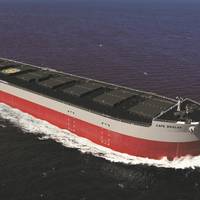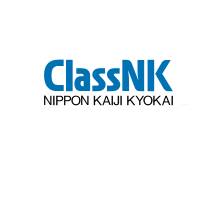'K' Line Takes Delivery of 210,000 DWT Bulk Carrier

The 210,000-dwt ton capesize bulker Cape Brolga has been delivered from Japan Marine United Corporation's Tsu shipyard to Kawasaki Kisen Kaisha, Ltd.
NYK Builds NGEN Bulk Carrier
Japanese shipping giant Nippon Yusen (NYK) has concluded a contract with Japan Marine United Corporation (JMU) for construction of a next-generation (NGEN) energy-saving bulk carrier.After delivery in 2021, the ship is expected to transport raw materials for JFE Steel Corporation under a long-term charter contract between NYK and JFE Steel.The ship will be a cape-size bulker for trading iron ore and coking coal in and around the Pacific. The new energy-efficient vessel not only will be compliant with NOx (nitrogen oxide) emission regulations (Tier III) and the IMO SOx emission cap but also will have a larger cargo space than a conventional ship…
Ugitech's Stainless Steel for Parts Subject to Heavy Wear and Tear

Hardness, corrosion resistance and impact strength are determinate factors in the lifecycle costs of wearing parts made of steel bar such as valve seats, bending guides and nozzles for abrasive liquids. The material's machinability, however, is just as relevant for quality and cost effectiveness. Ugitech now for the first time introduces to the market a stainless steel with outstanding values that meet all of these criteria. UGIMA 4116N is extremely hard thanks to the addition…
ClassNK Approves New Corrosion Resistant Steel
ClassNK has issued approval for Nippon Steel & Sumitomo Metal Corporation’s newly developed corrosion resistant steel (NSGP-2) for use on the upper deck and/or inner bottom of crude oil tanker cargo oil tanks (COT). Following earlier approvals of steels for the inner bottom plating of COTs, this marks the first time that approval has been granted for corrosion resistant steels for both the top and bottom parts of the COT, providing owners and shipyards with a practical alternative to coating systems. In order to reduce COT corrosion and improve crude oil tanker safety, new amendments to the SOLAS Convention were issued in May 2010 requiring oil tankers over 5…
ClassNK Approves First Corrosion Resistant Steel

April 27 (Tokyo) - ClassNK announced today that it had issued the world’s first type approval for corrosion resistant steel to the new NSGP®-1 steel manufactured by Nippon Steel Corporation’s Oita Works . The approval certifies that the new steel, which has been specifically designed for application on the inner bottom of the cargo oil tanks of crude oil tanker, complies with the IMO’s new performance standard for corrosion resistant steels. New requirements for preventing corrosion…
First Standards for Application of Corrosion Resistant Steels
ClassNK has developed and released the world’s first set of standards for the application of corrosion resistant steels to the cargo oil tanks of oil tankers. The new Guidelines on Corrosion Resistant Steel for COT are the first guidelines to lay out clear requirements for the application of the new steels, whose use was approved by the IMO’s Maritime Safety Committee (MSC) earlier this year. The growing volume of crude oil carried by the world’s tanker fleet has led to rising concerns over pollution of the marine environment, and the last decade has brought tremendous changes to the building and survey requirements for oil tankers.
New coatings safer, last longer Bottom Line: It's Not Just A Paint Job
On the surface, the subject of paint seems simple. After all, it's just a paint job, right? For maritime applications, however, beauty is much more than skin deep. The coating of surfaces on ships is a complex combination of materials, chemicals and preparation to combat corrosion and maintain a sharp appearance. The coatings must wear well in the worst of weather and withstand the most extreme environments. They must last with little maintenance, must be earth friendly and safe for people and other living things, and last but certainly not least, they must be affordable. The paint job found on a contemporary ship may look the same as that of a ship of several decades ago, when in fact very little is the same.







